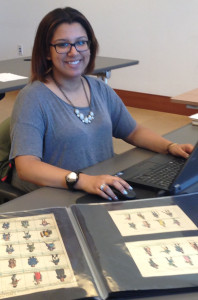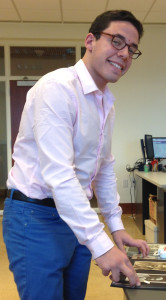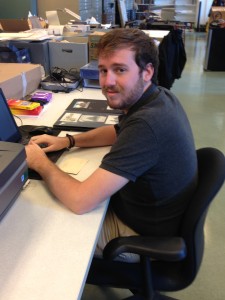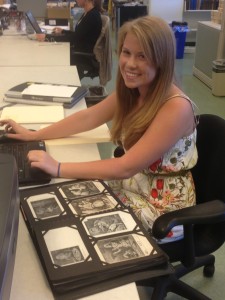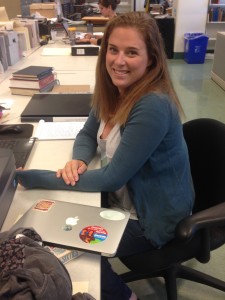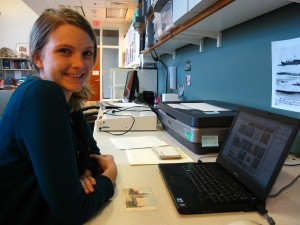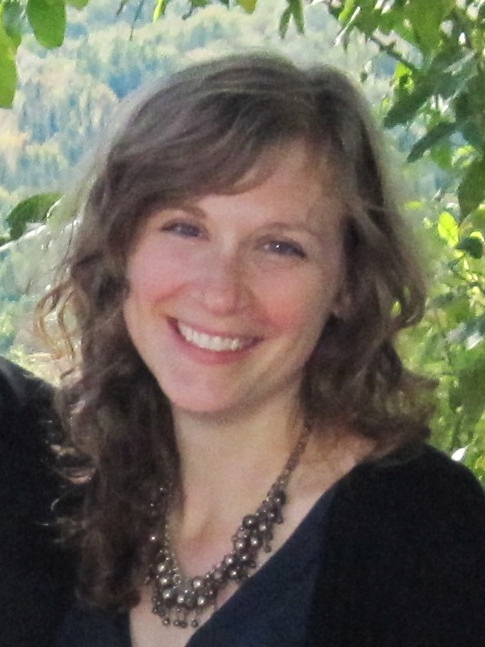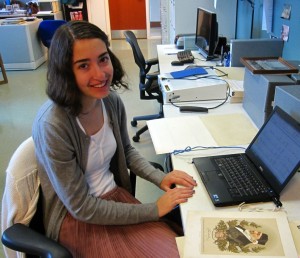Two fantastic interns have joined the Rosenthall project for the Spring semester, bringing with them Hebrew and German language skills, knowledge of Jewish and German culture, and a desire to learn more about the the prints and postcards held in the collection as they work to scan, re-house, and describe them. Meet our new interns:
Jamila Anderson is a senior at the College of Charleston with double majors in German and business administration, with a concentration in marketing. She is a native German speaker, and she is currently using her language expertise to research and translate a portfolio of prints containing German-language anti-Semitic caricatures. Jamila described why she enjoys working with the collection, and which print has interested her the most so far:
“What I found most interesting about the collection is that I am actually handling pieces of history, some of which are centuries old. I find it amazing that I can start out with just a simple caricature, and after a bit of research have an entire story that goes along with the piece. My favorite item is actually a series of seven engravings that reference the play “Unser Verkehr” by Karl B. Sessa. These are my favorite items because they are all intertwined, and represent different components of the play. I find it really interesting that there are so many different perspectives of this single topic, and that the entire series of engravings depict the plot of the play.”
Gabe Davidson is a junior at the College of Charleston majoring in philosophy. While living and studying on Kibbutz Sde Eliyahu in Israel for five months last year, he began to cultivate an interest in studying Jewish texts and familiarizing himself with some of the prominent thinkers and rabbis behind them. Gabe is looking forward to furthering his knowledge of Jewish history while working with an extensive collection of figures central to Jewish thought. He has been using his Hebrew language skills to complete a portfolio of postcards featuring rabbis and Jewish leaders, most of which contain texts only in Hebrew and Yiddish. Gabe found a postcard featuring a photograph of World War I flying ace Wilhelm Frankl to be the most interesting item he has seen so far:
“I chose the postcard of Wilhelm Frankl postcard as my favorite, due to the outstanding legacy of Frankl. He volunteered to fly for the German army in World War I, and quickly rose to the rank of lieutenant. He died in battle at the age of 23, but not before converting to Christianity for his wife.”
We appreciate all of the work our interns have done so far, and look forward to the remainder of the semester!
